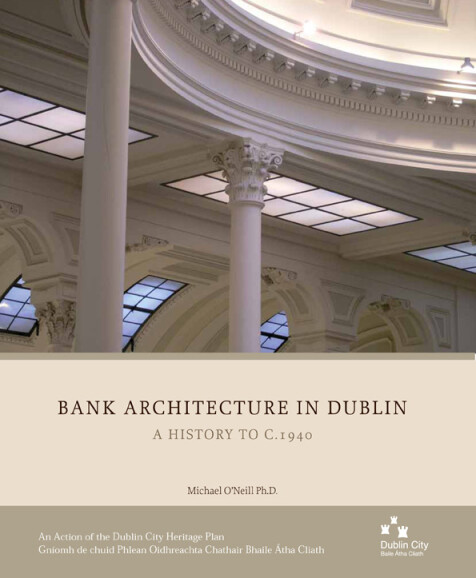Bank architecture in Dublin
A history to c.1940
Michael O'Neill
‘Charming … exteriors are carefully examined for remarkable pediments, door cases, inscriptions, cornices, balustrades, mansard roofs and even very fine examples of sculpture. The interiors often contained superb plasterwork, tasteful tiling, and fine cabinet making in the counters, doors and panelling. All of this is recorded with scholarly care by O’Neill … erudite but highly accessible … the book deserves to be a popular success if only to remind us of the permanent value of good design and its social benefits', Rory Brennan, Books Ireland (May 2012).
‘O’Neill seeks to celebrate the civic impact these buildings make, comparing their architectural role to that of churches or public houses … O’Neill is an experienced, thoughtful researcher who has written a fine introduction to some of the city’s architectural gems … He uses plain yet compelling descriptions, allowing the architecture to speak for itself', Stephen Best, Sunday Times (18 March 2012).
‘A potted history of banking in Ireland, explaining its development and place in society … there are many fine colour photographs throughout illustrating the surprisingly varied and interesting interiors and exteriors. It is a curious feature of Ireland that banks rival churches in their size and splendour', Books Ireland (March 2012).
‘A surprisingly interesting journey through some of the hidden gems of our capital city … nobody can deny that bank buildings are some of the most iconic and imposing structures around Dublin. Yet, many of us take these wonderful structures for granted, rarely if ever stopping to appreciate their architectural features … Dr O’Neill provides a brief history of each building and the banking institutions concerned. His provision of extensive references to documentary sources is an exceptionally useful aid to further research, not only for students of architecture, but for anyone interested in the history of banking and those associated with the industry', Michael Merrigan, Ireland’s Genealogical Gazette (March 2012).

